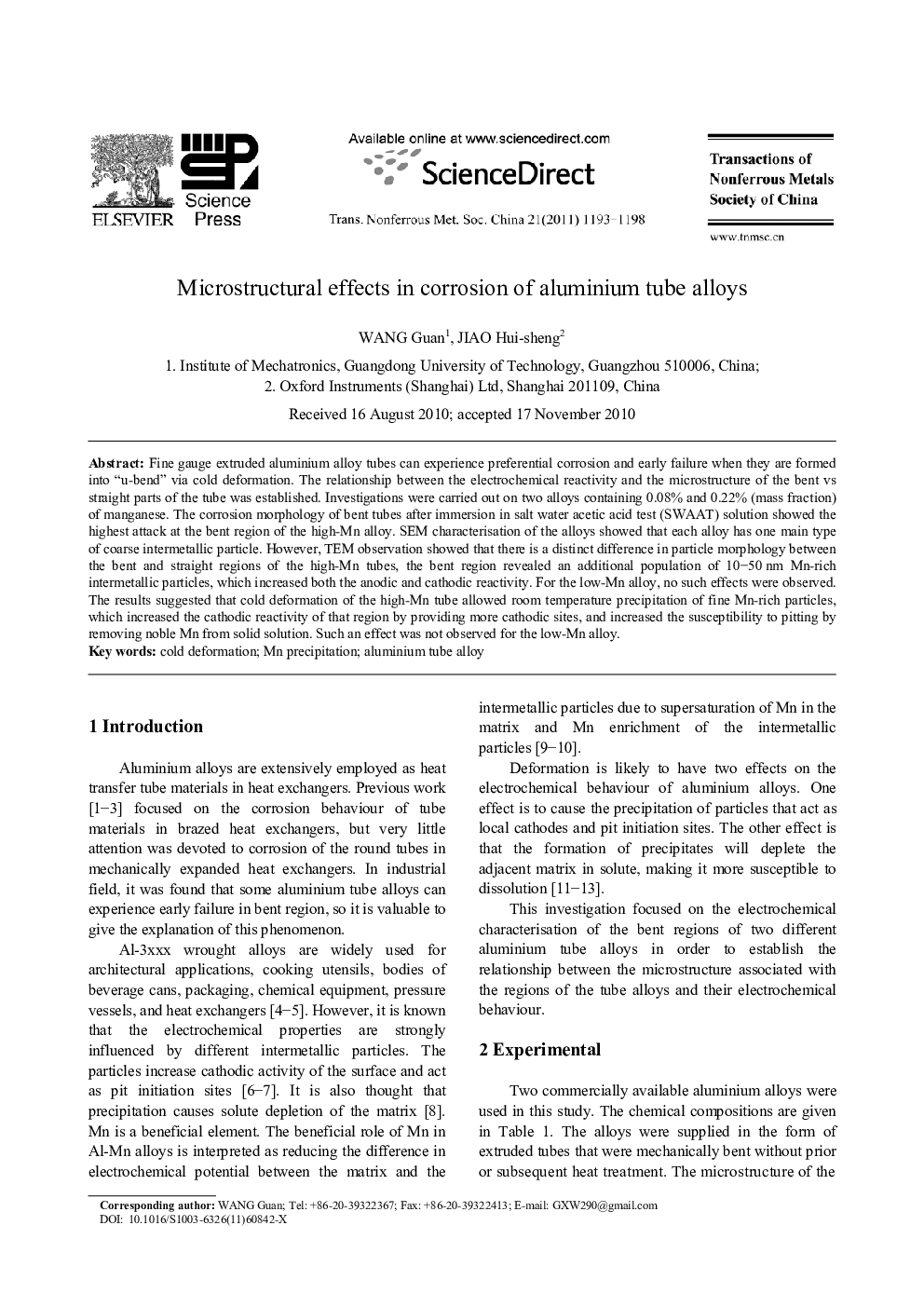| Article ID | Journal | Published Year | Pages | File Type |
|---|---|---|---|---|
| 1637612 | Transactions of Nonferrous Metals Society of China | 2011 | 6 Pages |
Abstract
Fine gauge extruded aluminium alloy tubes can experience preferential corrosion and early failure when they are formed into “u-bend” via cold deformation. The relationship between the electrochemical reactivity and the microstructure of the bent vs straight parts of the tube was established. Investigations were carried out on two alloys containing 0.08% and 0.22% (mass fraction) of manganese. The corrosion morphology of bent tubes after immersion in salt water acetic acid test (SWAAT) solution showed the highest attack at the bent region of the high-Mn alloy. SEM characterisation of the alloys showed that each alloy has one main type of coarse intermetallic particle. However, TEM observation showed that there is a distinct difference in particle morphology between the bent and straight regions of the high-Mn tubes, the bent region revealed an additional population of 10-50 nm Mn-rich intermetallic particles, which increased both the anodic and cathodic reactivity. For the low-Mn alloy, no such effects were observed. The results suggested that cold deformation of the high-Mn tube allowed room temperature precipitation of fine Mn-rich particles, which increased the cathodic reactivity of that region by providing more cathodic sites, and increased the susceptibility to pitting by removing noble Mn from solid solution. Such an effect was not observed for the low-Mn alloy.
Keywords
Related Topics
Physical Sciences and Engineering
Materials Science
Metals and Alloys
Authors
Guan WANG, Hui-sheng JIAO,
